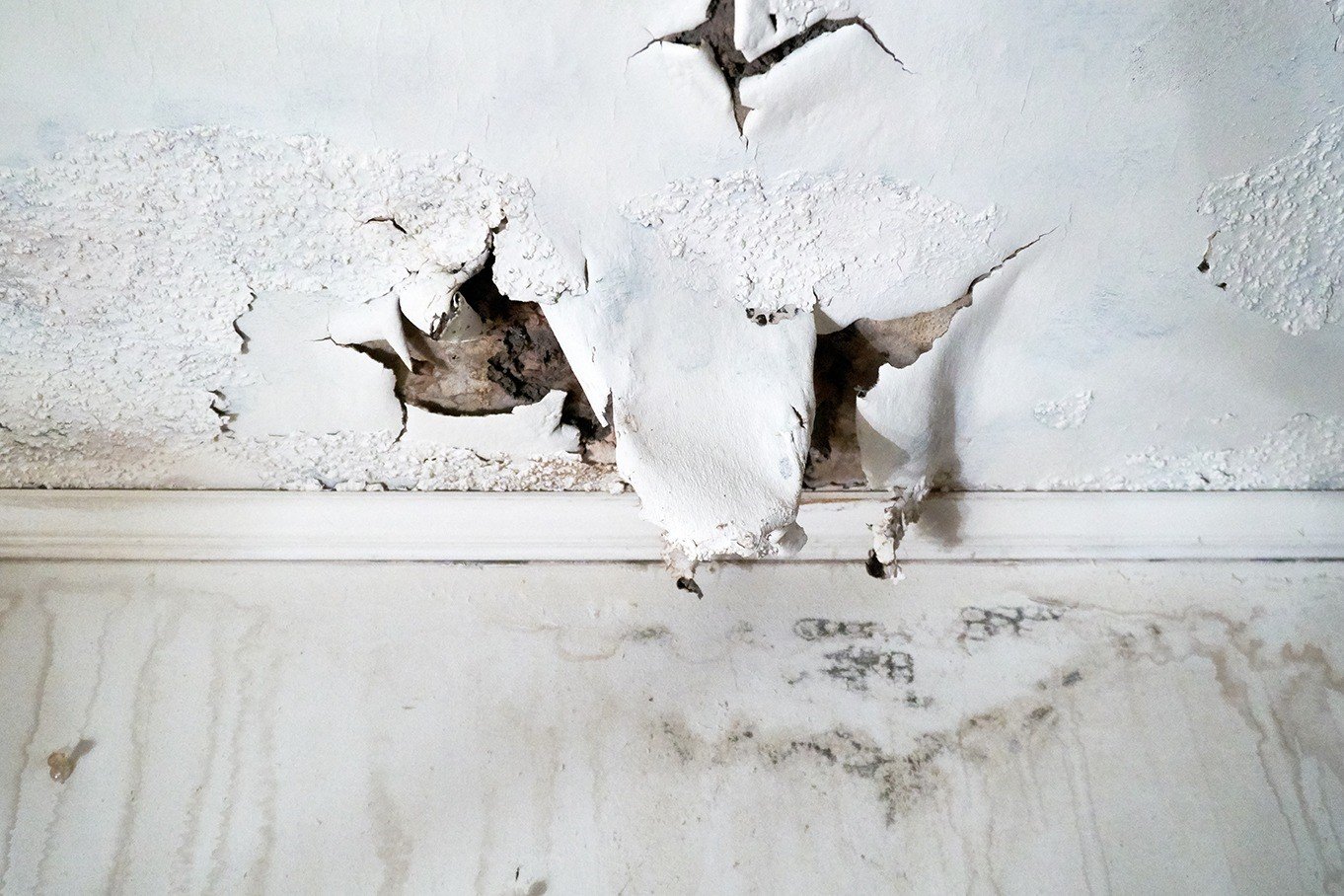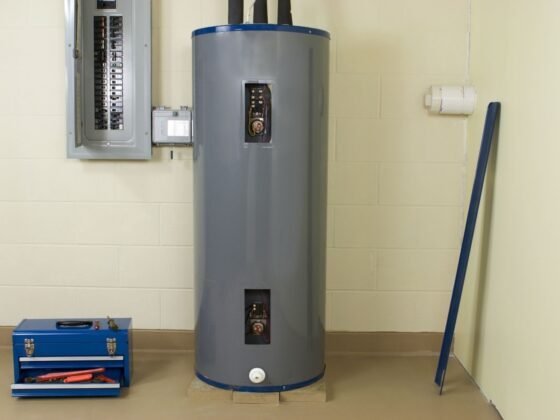Table of Contents Show
Do you suspect mold infestation in your home? The presence of this fungus manifests through both sneaky and apparent signs.
Not all species release a substance called mycotoxin, but those that do cause headaches, breathing problems, cold-like symptoms, etc.

Apart from noticing black spots on walls, mold manifests with a series of subtle signs, such as a nasty smell, bubbly walls, itchiness, allergy-like symptoms, rust, dark grout between shower tiles, and other indicators.
Learn more about the following six warning signs of mold damage.
Your HVAC System Smells Weird
A subtle sign of mold damage is the weird smell coming from your heating or air-conditioning system.
Standalone AC units are the primary spots for the growth of such fungus, as they are dark, damp, and underexposure to warm temperatures when not used.
For instance, by putting your air conditioner in a heated basement during the winter months, there is a higher chance of mold developing.
The strange odor might be present in other areas of the house, which are affected by dampness. The stronger the smell, the greater the likelihood of mold growth.
If you are overwhelmed by an unpleasant smell upon entering the house, perhaps it’s time to get in touch with a professional who wouldn’t take long to track the source of the musty odor.
Check out some handy tips for removing musty smells from your home.
Read Also:
Bubbly Walls
Another warning sign of mold presence in your home is bubbly walls. Such infestation leads to the formation of bubbles on painted walls.
The areas at the greatest risk of bubbling up are those where moisture is abundant. In case you suspect such an infestation, you should examine the walls and window areas in your bathroom and basement.
Moreover, leaking pipes and windowsills are ideal for such fungus to thrive.
In the event of bubbly painted walls, paint should be scraped, whereas the surface should be cleaned, patched, and dried properly before repainting it. Unless the surface is properly dried and the water source removed, the problem will appear again.
Apart from bubbly walls, a peeling wallpaper is also a signal of a mold problem.
Although discoloration is common to affect wallpapers, unusual peeling and abnormalities on the surface are indicators of moisture present inside the wall.
If your wallpaper is cracking or bubbling, the moisture underneath it will easily lead to mold. Always keep an eye on the condition of your walls to check if any areas look warped or damp.
Water Leaks
Another warning sign of mold damage in your beloved home is the appearance of a water leak.
There is an extensive range of Bethlehem mold removal and restoration services, which perform mold testing procedures. While the damage caused by a leak isn’t always noticeable, it becomes more severe over time.
The leak might be behind a wall or another hidden surface, which makes it less obvious.
Nevertheless, homeowners should look for signs like wet blotches, unusual discoloration, growing stains, persistent moldy odor, etc. Water leaks have to be repaired as quickly as possible to prevent water from causing severe damage.
Homeowners should also pay attention to the areas where condensation usually forms, such as metal pipes and windows. Also, if your home has been flooded in the past, it’s likely for this fungus to grow as a consequence.
Feeling Itchy
Getting a feeling of itchiness is another often neglected sign of mold presence in households. This sneaky fungus is capable of infesting your clothing, particularly damp clothing.
People who have a habit of leaving wet towels on the floor in the bathroom are at the risk of such infestation.
On the same note, many homeowners tend to dry their laundry inside the house on a rack during winter. In such cases, this fungus might grow on the fibers and irritate your skin.
The simplest way of preventing this is by not drying wet clothes indoors and accumulating wet towels in the bathroom.
Feeling Under the Weather All the Time
Since mold has adverse effects on human health, household residents might feel like they are under the weather all the time.
Allergic reactions to this fungus manifest with nasal congestion, watery eyes, persistent coughing, headaches, sore throat, sneezing, etc.
The symptoms of such exposure imitate the symptoms of seasonal allergies. Follow this URL, https://www.healthline.com/health/mold-in-house, to see the most common health symptoms of mold exposure.
Furthermore, these allergic reactions can be skin-oriented, such as tingling and itching. The body produces histamines to oppose the effects of mold on the skin, which lead to dry and flaky skin.
Prolonged exposure might result in the infiltration of these spores in the lungs, which triggers asthma symptoms.
Individuals with breathing issues, such as asthma, experience more severe symptoms after spending longer time at home.
This fungus has the potential to aggravate asthma and other breathing conditions in people who already suffer from such health problems.
If you experience no symptoms while at work/school, but they worsen once you arrive at home, mold is probably the cause.
Dark Grout Between Shower Tiles
Have you noticed the dark color of the grout between your shower tiles? If you wonder why the grout has gradually turned black, the answer is most likely mold. Nevertheless, the fungus that appears between shower tiles is usually harmless.
Additionally, there is a likelihood for this fungus to be toxic if there was a bathroom leak or flooding recently. The best way of checking whether the fungus is toxic is by contacting professionals. They will take a sample and send it to a laboratory for testing.
Besides the dark grout between shower tiles, rust is another indicator of potential mold presence.
It appears when the amount of indoor moisture is excessive. As previously discussed, excessive moisture creates the perfect conditions for fungus growth.
The Bottom Line
If you notice any of these signs, waste no time contacting the professionals to get rid of the fungus in a safe and efficient manner.












